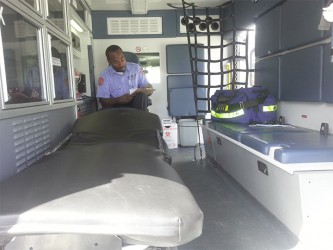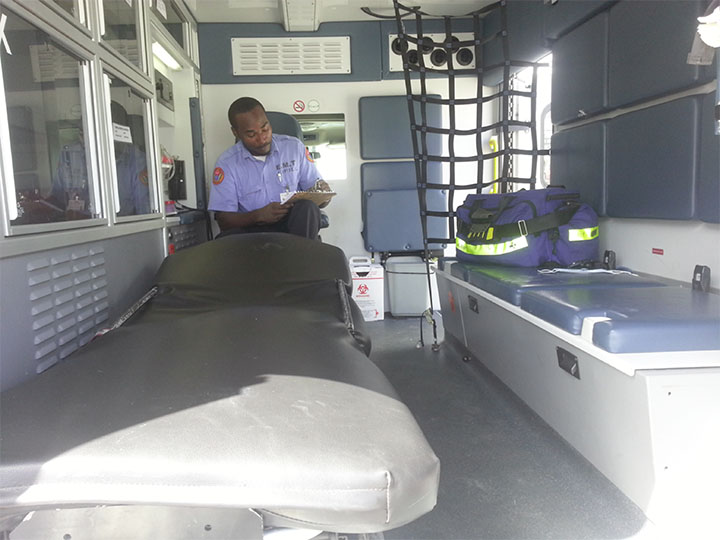Just a month after the Georgetown Public Hospital’s Emergency Medical Service began operations, Emergency Medical Technician (EMT) Ron Morris found himself delivering a baby en route to the hospital.

Morris, the EMT on duty, said that the service received a call about a pregnant woman experiencing severe abdominal pain. The ambulance picked Wendy Gill up from the road where she stood waiting for it and Morris realised that the baby’s head was already protruding. Left with no other option, Morris delivered the baby in the ambulance, and both mother and her healthy baby boy were transferred to the Maternity Ward upon arrival at the hospital. Morris related that this was just one of the numerous instances whereby the service was able to help individuals.
The service, which aims to ensure safe transport for ailing individuals, with the help of EMTs, started operations in March of this year.
This is according to Zulfikar Bux, Head of Department for Accident & Emergency at hospital, and who is responsible for the pilot programme, which is being undertaken by the hospital in collaboration with the Ministry of Health and Vanderbilt Medical Center in Nashville, Tennessee.
Prior to the programme, Guyana did not have a medical response system, and the city hospital’s ambulances were used primarily to transport hospital patients from one medical facility to another. According to Bux, this was detrimental because patients, especially accident victims, bore the brunt of this inefficiency and they may have been paralysed simply


